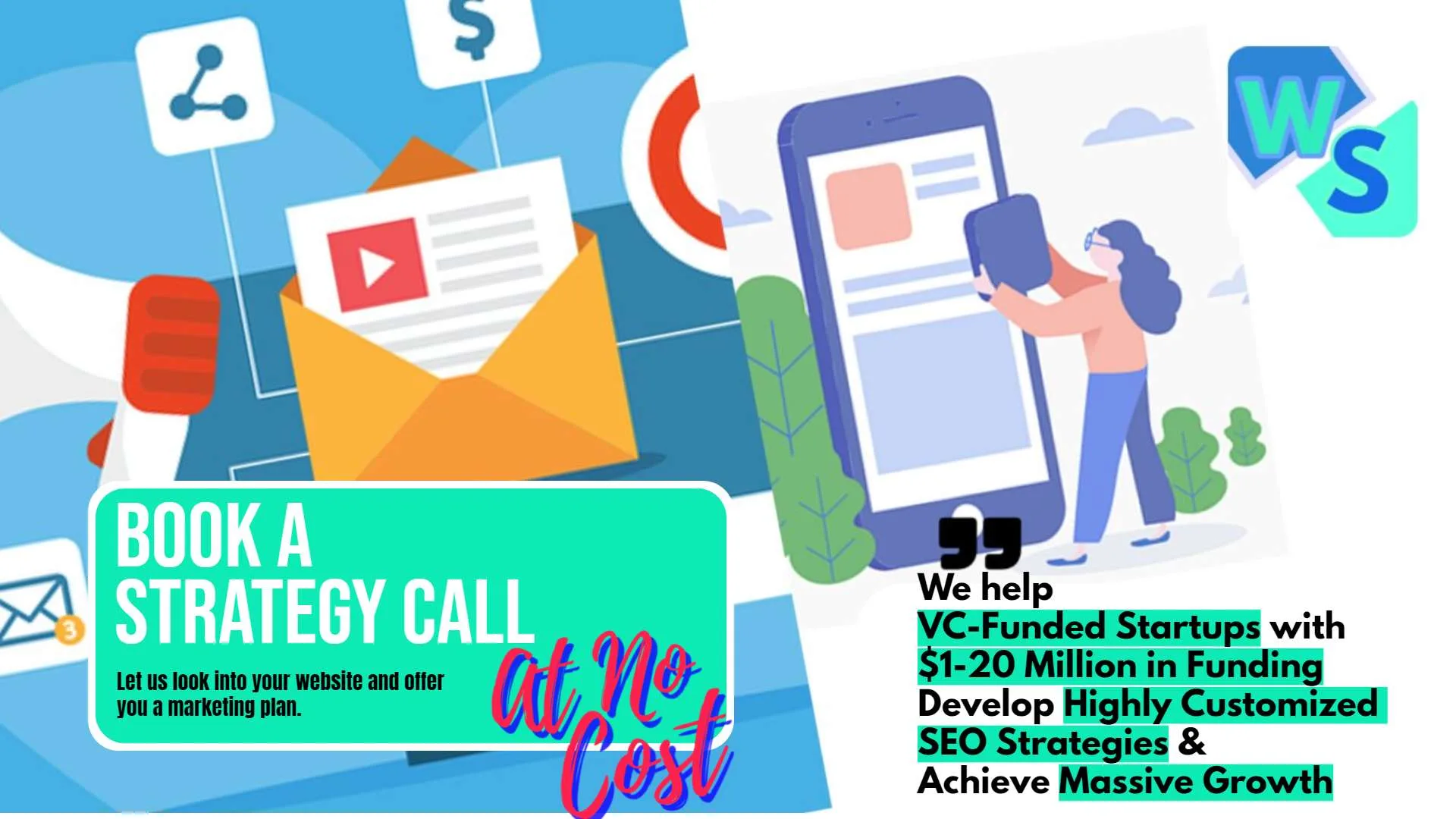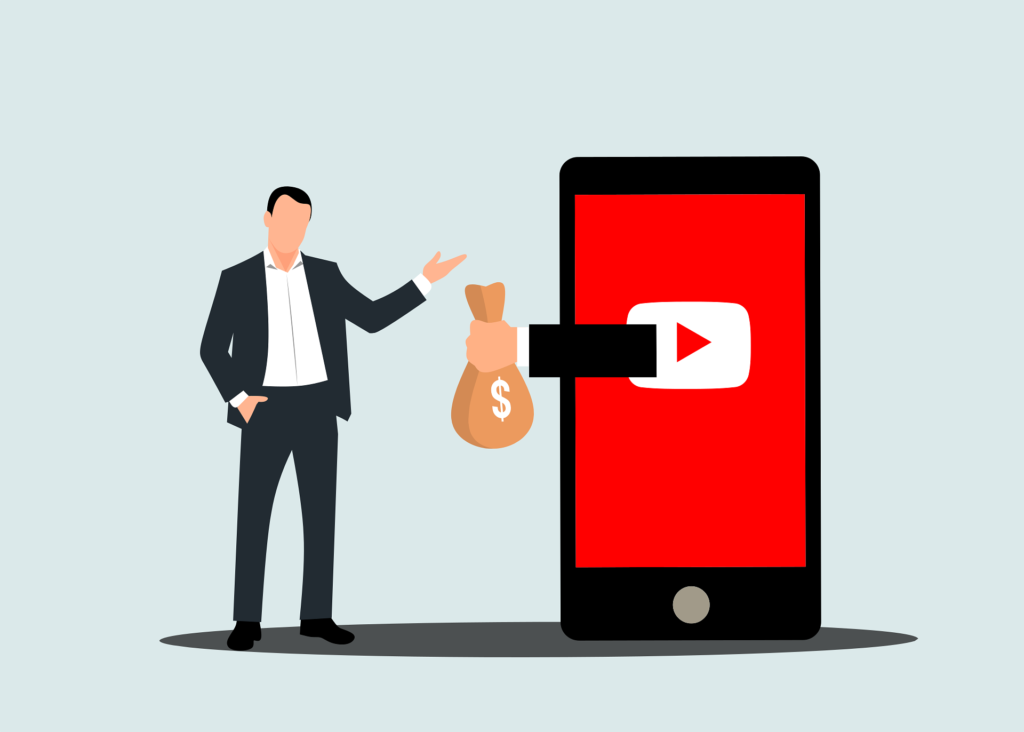Social media has become a crucial part of business strategy. With so many platforms available, it’s essential to choose the right ones to reach your target audience and achieve your business goals. The key is to understand where your audience spends their time and how each platform can support your marketing objectives. Let’s explore how to make the best choices for your business.
Understanding Your Audience
Understanding your audience is the cornerstone of any successful social media strategy. For startup founders, knowing who your audience is and what they want allows you to tailor your content, choose the right platforms, and engage more effectively. Here’s how to dive deeper into understanding your audience with strategic, actionable advice.
Conducting Deep Audience Research
To understand your audience, you need to go beyond basic demographics. Start by conducting comprehensive audience research to gather insights about your customers’ behavior, preferences, and needs.
Utilizing Analytics Tools
Use analytics tools to gather data on your current audience. Platforms like Google Analytics, Facebook Insights, Instagram Analytics, and LinkedIn Analytics provide valuable information about your audience’s demographics, behaviors, and interactions with your content. Analyze metrics such as age, gender, location, interests, and peak activity times.
For example, Google Analytics can show you which social media channels are driving the most traffic to your website, what content is most popular, and how long visitors stay on your site. This information helps you understand where to focus your efforts and what type of content resonates best with your audience.
Customer Surveys and Feedback
Direct feedback from your customers is invaluable. Conduct surveys and polls to learn more about their preferences and expectations. Ask questions about their social media habits, the type of content they enjoy, and what they look for in brands like yours.
For instance, you could use SurveyMonkey or Google Forms to create a survey and distribute it via email or social media. Questions might include, “Which social media platforms do you use most frequently?”, “What type of content do you prefer (videos, articles, images)?”, and “What time of day do you usually check social media?”
Creating Detailed Buyer Personas

Once you’ve gathered data, create detailed buyer personas. These are fictional representations of your ideal customers, based on real data and insights. A well-crafted persona includes demographics, psychographics, and behavioral information.
Demographic Information
Include basic demographic information such as age, gender, income, education level, and location. This helps you understand who your customers are.
For example, if your product is a high-end fitness tracker, your persona might be a 30-45-year-old professional with a high income, interested in health and wellness, living in an urban area.
Psychographic Information
Psychographics delve into the interests, values, attitudes, and lifestyle of your audience. This helps you understand why they might be interested in your product or service.
For instance, your persona might value a healthy lifestyle, enjoy outdoor activities, and be tech-savvy. They might follow fitness influencers on Instagram and participate in local fitness events.
Behavioral Information
Behavioral data includes purchasing habits, brand loyalty, and social media usage. This helps you understand how your audience interacts with brands and makes purchasing decisions.
For example, your persona might prefer online shopping, follow brands on social media for the latest product updates, and be influenced by user reviews and testimonials.
Analyzing Competitor Audiences
Look at your competitors to gain insights into their audience. Analyze their social media followers, the type of content they post, and the engagement they receive. Tools like SEMrush, Ahrefs, and BuzzSumo can help you gather data on competitor performance and audience engagement.
For example, if a competitor’s Instagram posts featuring user-generated content receive high engagement, consider implementing a similar strategy. Understanding what works for your competitors can provide valuable insights for your own strategy.
Engaging with Your Audience
Engage directly with your audience to build relationships and gather insights. Respond to comments, participate in discussions, and ask for feedback. This not only strengthens your connection with your audience but also provides real-time insights into their preferences and needs.
For example, run an Instagram Story Q&A where followers can ask questions about your products or services. This not only engages your audience but also gives you direct feedback on what they’re curious about.
Monitoring Trends and Conversations
Stay updated on the latest trends and conversations relevant to your industry. Use social listening tools like Hootsuite, Brandwatch, or Sprout Social to monitor hashtags, keywords, and discussions. This helps you stay ahead of trends and understand what matters most to your audience.
For instance, if you notice a rising trend in sustainable fashion, create content that highlights your brand’s commitment to sustainability. Engaging in relevant conversations can position your brand as an industry leader.
Testing and Refining Your Approach
Finally, continuously test and refine your approach based on the data you collect. Use A/B testing to compare different types of content and posting strategies. Track performance metrics and adjust your strategy to improve engagement and reach.
For example, test different types of Instagram posts (images, videos, carousels) to see which formats generate the most engagement. Use this data to inform your content strategy moving forward.
Evaluating Different Platforms
Choosing the right social media platforms for your business involves a strategic evaluation of each platform’s features, user base, and alignment with your business goals. Here’s a deeper dive into the unique strengths of various platforms and how startup founders can leverage them effectively.
Facebook remains one of the largest social media platforms, with over 2.8 billion monthly active users. Its broad user base makes it ideal for businesses targeting a wide audience. The platform’s demographics are diverse, with significant representation across all age groups, particularly users aged 25-54. Facebook’s robust advertising tools allow for advanced targeting based on demographics, interests, and behaviors. This capability enables businesses to reach their ideal customers more efficiently.
To leverage Facebook effectively, utilize its engagement tools such as Facebook Groups to build a community around your brand. Groups allow for more personalized interactions, fostering a loyal customer base. Post a mix of content types, including images, videos, articles, and live streams, as Facebook’s algorithm favors diverse content that keeps users engaged.
Engaging your audience through polls and surveys can also gather valuable feedback and insights. Utilizing Facebook Live for Q&A sessions, product launches, or behind-the-scenes tours often results in higher engagement rates. Starting with small, targeted ad campaigns can help you test different audiences and refine your targeting based on performance data.
Instagram has over 1 billion monthly active users, with a strong presence among younger demographics, particularly those aged 18-34. It’s a highly visual platform, making it perfect for brands with strong visual content. Businesses in fashion, beauty, food, travel, and lifestyle sectors can particularly benefit from Instagram’s visual appeal.
To make the most of Instagram, focus on creating high-quality images and videos that tell your brand’s story. Use Instagram Stories to share daily updates, behind-the-scenes content, and quick polls, while IGTV is perfect for longer videos such as tutorials and interviews.
Instagram’s shopping features are ideal for e-commerce businesses, allowing you to tag products in posts and stories, making it easy for users to shop directly from the app. Engaging with your audience through interactive features like polls, quizzes, and live videos can also boost engagement and foster a stronger connection with your followers.
Twitter is known for its real-time updates and is ideal for businesses that want to share news, updates, and engage in conversations. The platform attracts a younger demographic, with a significant number of users aged 18-29. Twitter is particularly effective for tech companies, media outlets, and service-based businesses that thrive on timely updates and real-time engagement.
To use Twitter effectively, focus on sharing concise, timely updates and engaging in conversations. Use hashtags to join trending topics and increase the visibility of your posts. Sharing links to your blog posts, news articles, and other content can drive traffic to your website.
Engaging with followers by responding to their tweets and participating in Twitter chats helps build a community around your brand. Monitoring industry trends and joining relevant conversations can position your business as a thought leader in your field.
LinkedIn is the go-to platform for B2B marketing and professional networking. It’s particularly effective for industries such as finance, technology, and consulting, where businesses target professionals or other companies. LinkedIn’s user base consists mainly of professionals, making it ideal for sharing industry insights, company news, and professional achievements.
To leverage LinkedIn, share valuable content that establishes your brand as a thought leader in your industry. Use LinkedIn Pulse to publish long-form articles that dive deep into industry topics. Posting updates about company milestones, job openings, and professional achievements keeps your network informed and engaged.
LinkedIn’s advertising options allow you to target specific industries and job roles, making it easier to reach decision-makers and potential clients. Building and participating in LinkedIn Groups can also help you connect with like-minded professionals and expand your network.
Pinterest’s user base is predominantly female, with a strong focus on DIY, home decor, fashion, and food. Users come to Pinterest to find inspiration and ideas, making it a great platform to showcase your products and drive traffic to your website. Creating visually appealing pins and organizing them into themed boards can attract your target audience.
To utilize Pinterest effectively, focus on creating high-quality, visually appealing pins that link back to your blog posts, product pages, or other resources. Organize your pins into themed boards to make it easy for users to find related content.
Use informative descriptions and keywords to improve the discoverability of your pins. Promoting your pins through Pinterest Ads can also help increase visibility and drive more traffic to your website.
TikTok
TikTok is known for its short-form video content and is popular among younger audiences, particularly those under 30. The platform is perfect for brands that can create fun, engaging, and viral content. TikTok’s algorithm favors fresh, engaging content, so posting regularly is key to staying visible.
To leverage TikTok, focus on creating short, snappy videos that showcase your brand’s personality. Participate in trending challenges and use popular sounds to increase the chances of your videos going viral. Show your brand’s personality through behind-the-scenes looks, product demos, and user-generated content. Engaging with your audience by responding to comments and participating in challenges can also help build a community around your brand.
YouTube
YouTube is the second largest search engine after Google and is ideal for businesses that can create video content. The platform’s user base is diverse, with a slightly younger skew. YouTube is perfect for long-form video content such as tutorials, product reviews, and vlogs.
To use YouTube effectively, focus on creating high-quality videos that provide value to your audience. Establish a regular posting schedule to build a loyal audience. Use YouTube’s SEO features, such as keywords and tags, to help users find your videos.
Engaging with your audience by responding to comments and encouraging subscriptions can help build a loyal community around your channel. Analyzing your video performance using YouTube Analytics can help you understand what resonates with your audience and refine your content strategy accordingly.

Aligning Platform Choice with Business Goals
Aligning your choice of social media platforms with your business goals is essential for maximizing your marketing efforts. Each platform offers unique features and benefits that can help you achieve specific objectives. Here’s how to strategically align your social media platform choices with common business goals.
Increasing Brand Awareness
If your primary goal is to increase brand awareness, focus on platforms with large user bases and high engagement rates. Facebook, Instagram, and TikTok are ideal for reaching a broad audience and building brand recognition.
On Facebook, utilize its extensive advertising options to target specific demographics and interests. Create engaging and shareable content, such as viral videos, infographics, and interactive posts, to reach a wider audience. Facebook’s algorithms favor diverse and engaging content, so a mix of videos, images, and posts that encourage interaction can significantly boost your visibility.
Instagram, with its strong visual appeal, is perfect for showcasing your brand through high-quality images and videos. Utilize Instagram Stories, Reels, and IGTV to create captivating content that highlights your brand’s personality. Collaborate with influencers to expand your reach and increase brand visibility. Their endorsement can lend credibility and expose your brand to their followers.
TikTok’s dynamic and engaging format is excellent for capturing the attention of a younger audience. Focus on creating entertaining short-form videos that align with trending topics. Participate in TikTok challenges and use popular hashtags to increase the chances of your content going viral. The platform’s algorithm favors fresh and engaging content, so regular posting is key to maintaining visibility.
Driving Website Traffic
To drive traffic to your website, choose platforms that support link sharing and have high referral potential. Pinterest, Twitter, and LinkedIn are particularly effective for this purpose.
On Pinterest, create visually appealing pins that link directly to your website. Organize pins into themed boards that align with your products or services. Use informative descriptions and keywords to improve the discoverability of your pins.
Promoting your pins through Pinterest Ads can also help increase visibility and drive more traffic to your site. Pinterest users often use the platform for planning and inspiration, making them more likely to visit your website for further information or purchases.
Twitter’s real-time nature and link-sharing capabilities make it a powerful tool for driving traffic. Share links to your blog posts, product pages, and other web content. Use compelling headlines and visuals to encourage clicks.
Participate in Twitter chats and trending conversations to increase visibility and drive traffic. Engaging with followers by responding to their tweets and retweeting relevant content can also help build a community around your brand.
LinkedIn is ideal for driving traffic from a professional audience. Publish long-form articles on LinkedIn Pulse that link back to your website. Share industry insights and case studies to establish your expertise and attract professional audiences to your site. Use LinkedIn’s advanced targeting options to reach specific industries, job roles, and companies, ensuring that your content reaches the right audience.
Generating Leads
For lead generation, platforms with advanced targeting options and professional networking capabilities are best. LinkedIn and Facebook are highly effective for capturing leads through targeted ads and lead magnets.
On LinkedIn, use advanced targeting options to reach specific industries, job roles, and companies. Offer lead magnets such as whitepapers, ebooks, and webinars to capture contact information. Leverage LinkedIn Ads to promote your lead generation campaigns. Engaging with potential leads through personalized messages and participating in relevant LinkedIn Groups can also help nurture relationships and convert leads into customers.
Facebook’s extensive targeting capabilities allow you to create highly personalized ad campaigns. Use Facebook’s Custom Audiences feature to target potential leads based on their demographics, interests, and behaviors. Promote gated content, such as exclusive reports or free trials, to encourage sign-ups. Facebook Lead Ads streamline the process by allowing users to submit their information directly within the platform, reducing friction and increasing conversion rates.
Building Community
If building a community around your brand is your goal, focus on platforms that facilitate interaction and engagement. Facebook Groups, Twitter, and Reddit are ideal for creating and nurturing communities.
Creating and managing a Facebook Group allows customers and followers to connect, share experiences, and engage with your brand. Foster discussions by posting relevant content and actively participating in conversations. Regularly engage with group members by responding to their posts, hosting live Q&A sessions, and sharing exclusive content. This not only builds a sense of community but also positions your brand as a trusted authority.
Twitter’s real-time nature makes it perfect for building a community. Engage with followers by responding to their tweets, participating in Twitter chats, and joining relevant conversations. Use Twitter polls and questions to encourage interaction and gather feedback from your audience. Regularly sharing valuable content and retweeting relevant posts can help build a loyal following and increase engagement.
Reddit’s vast array of subreddits allows you to find and engage with niche communities. Identify and participate in relevant subreddits where your target audience is active. Share valuable insights, answer questions, and build a reputation as a helpful and knowledgeable brand. Hosting AMAs (Ask Me Anything) sessions can also help you connect with the community and establish your expertise.
Enhancing Customer Service
Providing excellent customer service is crucial for building trust and loyalty. Social media platforms like Twitter and Facebook are effective for real-time customer support and engagement.
On Twitter, use the platform as a customer service channel by responding promptly to customer inquiries and complaints. Monitor brand mentions and hashtags to identify and address customer issues quickly. Providing timely and helpful responses not only resolves issues but also demonstrates your commitment to customer satisfaction.
Facebook offers multiple ways to enhance customer service. Set up a dedicated customer support page or use Messenger to handle customer service inquiries. Provide timely and helpful responses to build trust and satisfaction among your customers. Using automated responses and chatbots can help manage high volumes of inquiries, ensuring that customers receive immediate assistance.
Boosting Sales and Conversions
To boost sales and conversions, focus on platforms with strong e-commerce features and high user engagement. Instagram, Facebook, and Pinterest are particularly effective for driving sales.
Instagram’s Shopping features allow you to tag products in your posts and stories, making it easy for users to shop directly from the app. Run Instagram Ads to promote your products and drive conversions. Use shoppable posts to showcase your products in a visually appealing way, and leverage Instagram Stories to share limited-time offers and promotions.
Facebook Shops enable you to create an online store directly on the platform. Use Facebook Ads to target potential customers and drive sales. Run dynamic ads that show personalized product recommendations based on user behavior. Integrating your e-commerce platform with Facebook Shops allows for seamless shopping experiences and can significantly boost conversions.
Pinterest’s buyable pins allow users to purchase products directly from the platform. Use Pinterest Ads to promote your products and drive traffic to your online store. Showcase your products in themed boards that inspire users to make a purchase. Regularly updating your pins and boards with fresh, seasonal content can keep your audience engaged and encourage repeat visits.
Measuring Success and Refining Strategy

Once you have aligned your platform choices with your business goals, it’s essential to measure your success and refine your strategy based on performance data. Use the analytics tools provided by each platform to track key metrics such as engagement, reach, traffic, and conversions. Regularly review your performance and make adjustments to optimize your social media strategy.
Analyzing your data can reveal insights into which platforms and content types are most effective at achieving your goals. For instance, if Instagram Stories generate high engagement, you might allocate more resources to creating story content. If LinkedIn Pulse articles drive significant traffic to your website, consider increasing your publication frequency and exploring new topics that resonate with your audience.
Conclusion
Choosing the right social media platforms for your business is a strategic decision that can significantly impact your marketing success. By understanding your audience, evaluating different platforms, and aligning your platform choices with your specific business goals, you can create a targeted and effective social media strategy.
Each platform offers unique features and benefits that can help you achieve various objectives, from increasing brand awareness and driving website traffic to generating leads, building community, enhancing customer service, and boosting sales.
For startup founders, the key is to conduct thorough research, utilize platform-specific tools, and continuously analyze performance data to refine your approach. By staying flexible and responsive to your audience’s needs and preferences, you can maximize the impact of your social media efforts and drive meaningful results for your business.
Read Next:
- Hot Marketing Ideas to Heat Up Your Summer Sales
- Marketing Strategies to Promote Travel Agencies
- Relaxing Marketing Ideas to Attract Spa Clients
- Creative T-Shirt Marketing Ideas to Promote Your Brand
- Fresh Marketing Strategies to Welcome Spring





















Comments are closed.